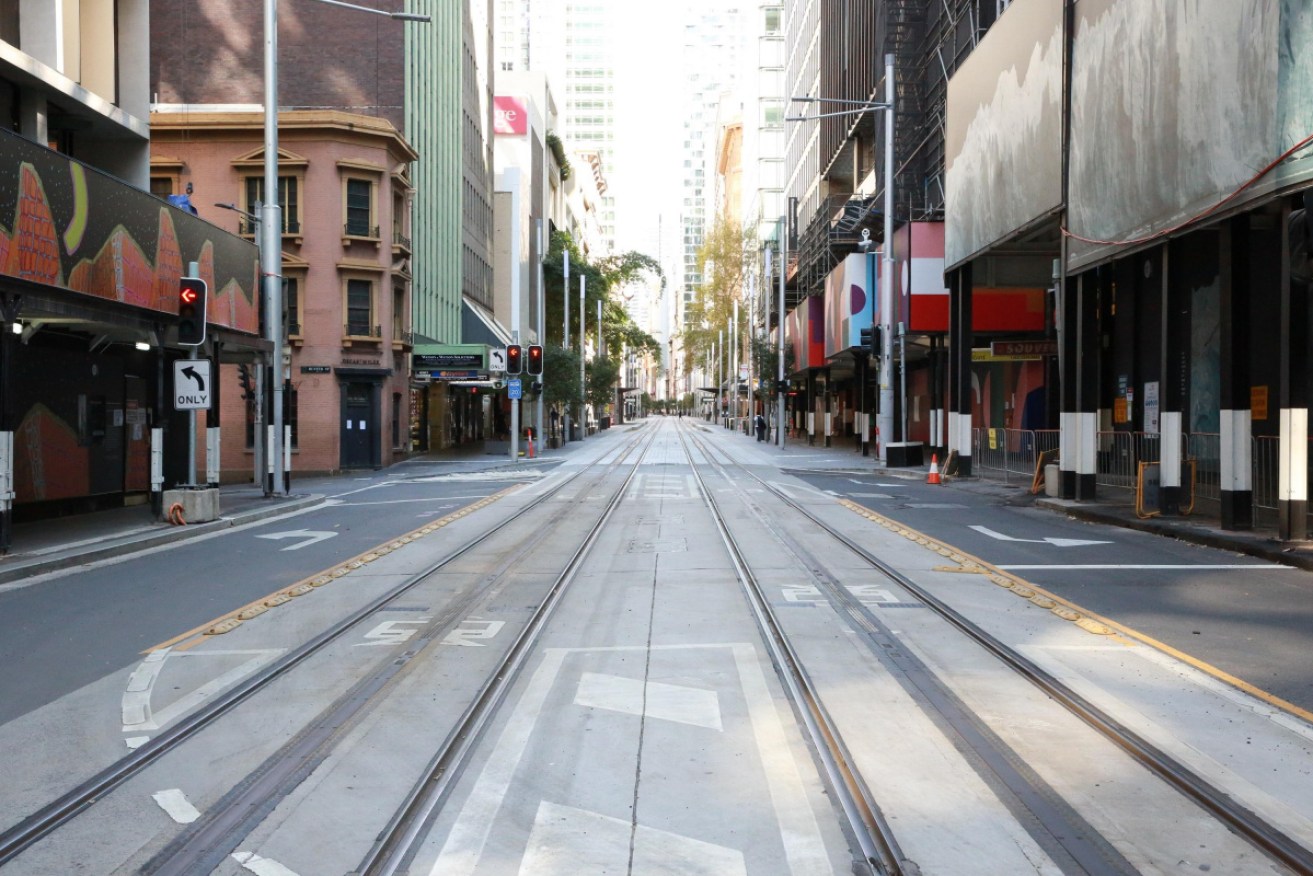The $10 billion cost of Australia’s lockdowns


Empty streets and moribund stores - that's just sector of the economy being walloped by COVID-19. Photo: Getty
The price of having Australia’s two major cities in lockdown is estimated to be costing the nation around $10 billion, but this is a growing figure that could result in the economy going into contraction in the September quarter.
The full impact on households from last month’s Victorian lockdown alone will be plain to see when new retail spending figures are released on Wednesday.
The Australian Bureau of Statistics will issue its preliminary retail trade figures for June, with forecasts among economists centring on a 0.4 per cent decline, wiping out the 0.4 per cent gain seen in May.
Forecasts range from a 0.3 per cent rise to a one per cent fall.
However, Westpac economists point out that lockdowns have previously generated gains for retail sectors like basic food, which accounts for 40 per cent of total retail sales.
But in a note to clients, they also point out that the July figures will be clobbered by the snap lockdowns in Brisbane, Darwin and Perth, as well as the the now lengthy restrictions in Greater Sydney.
Greater Sydney is in lockdown until at least July 30, with additional restrictions announced on Saturday, while Victoria is in a further five-day shutdown, which is increasingly seen as likely to be extended.
Still, history shows that once restrictions are eased, the economy bounces back fairly rapidly.
The Reserve Bank will release the minutes of its July 6 board meeting on Tuesday, where it left the cash rate at a record low 0.1 per cent and made adjustments to its future bond buying program.
RBA governor Philip Lowe subsequently gave a rare media conference, followed by an in-depth speech, suggesting the minutes may not offer anything new for the interest rate outlook.
However, one key message that emerged is the need to get the unemployment rate lower.
Last week’s labour force figures showing the jobless rate falling to a 10-year low of 4.9 per cent will provide some comfort to the RBA, even if virus outbreaks have now muddied the outlook.
Among other data due from the ABS are weekly payroll job figures and preliminary international trade numbers for June both on Thursday.
Meanwhile, Australian shares look set for a weak opening on Monday as concerns over the highly contagious Delta variant grow both here, in the US and around the world.
Australian share futures were 37 points, or 0.5 per cent lower, at 7232.
On Friday, the Australian S&P/ASX200 benchmark index closed up 12.2 points, or 0.17 per cent, to 7348.1.
-AAP








